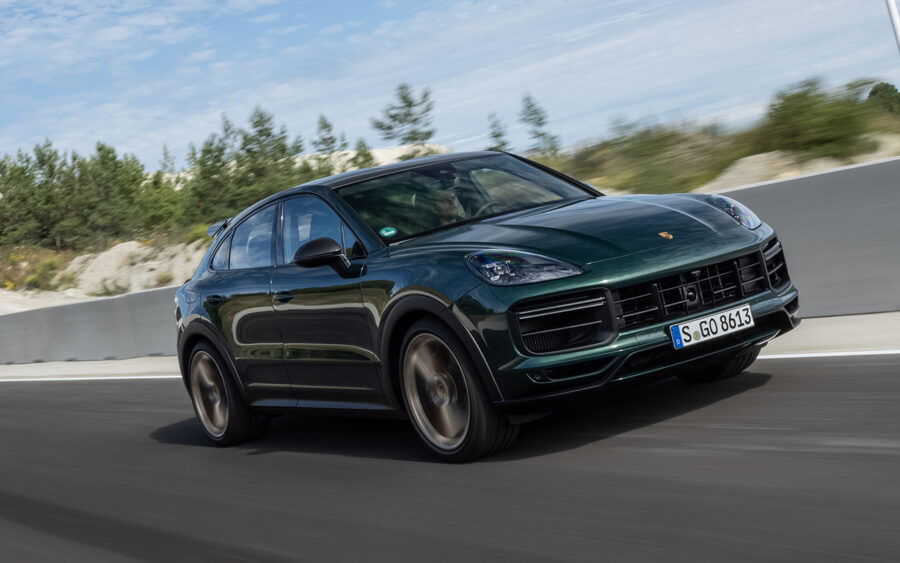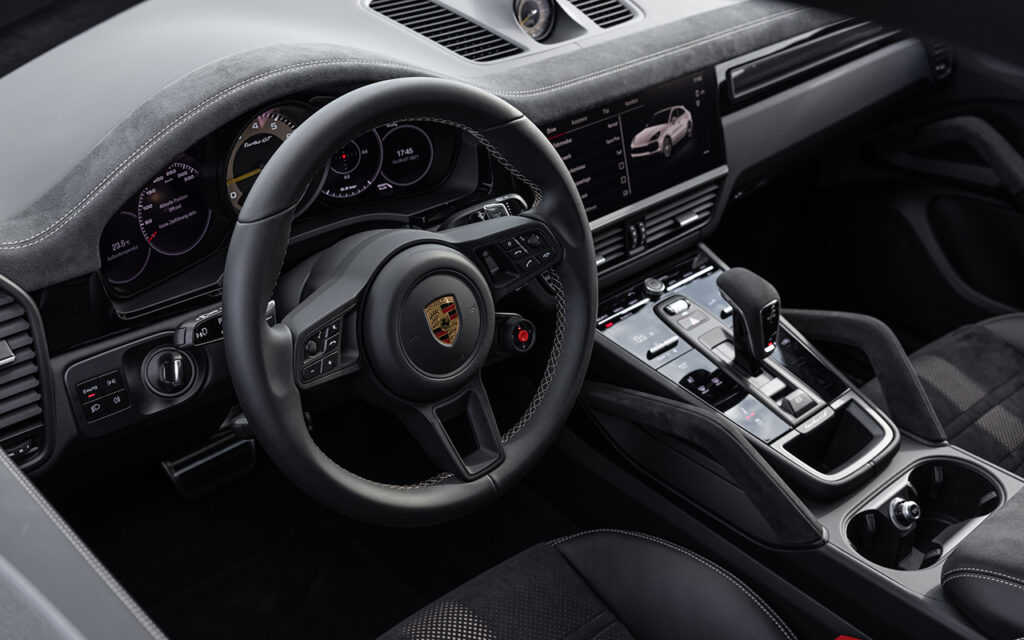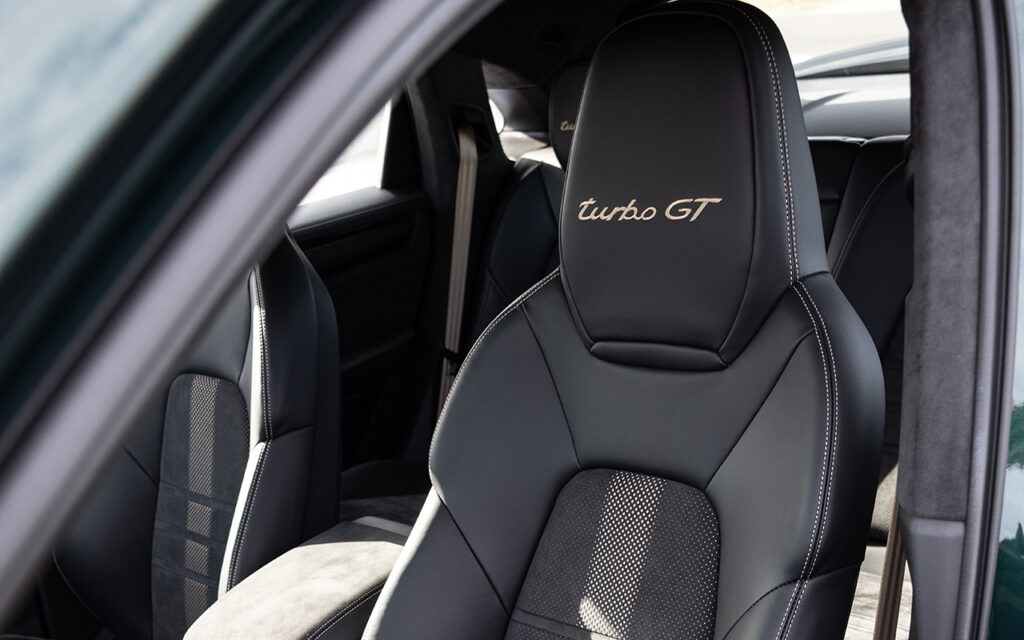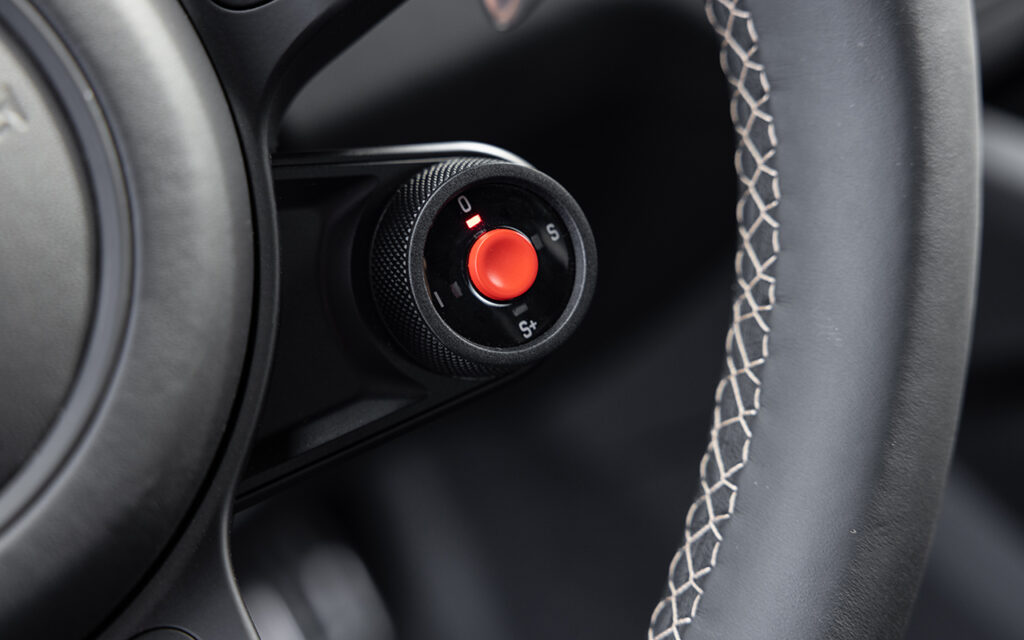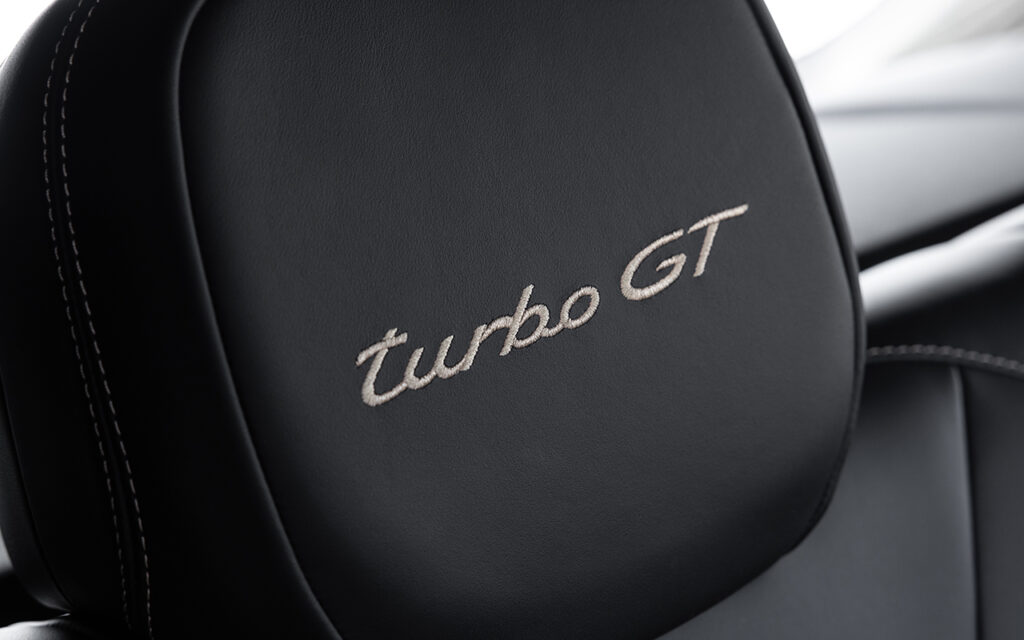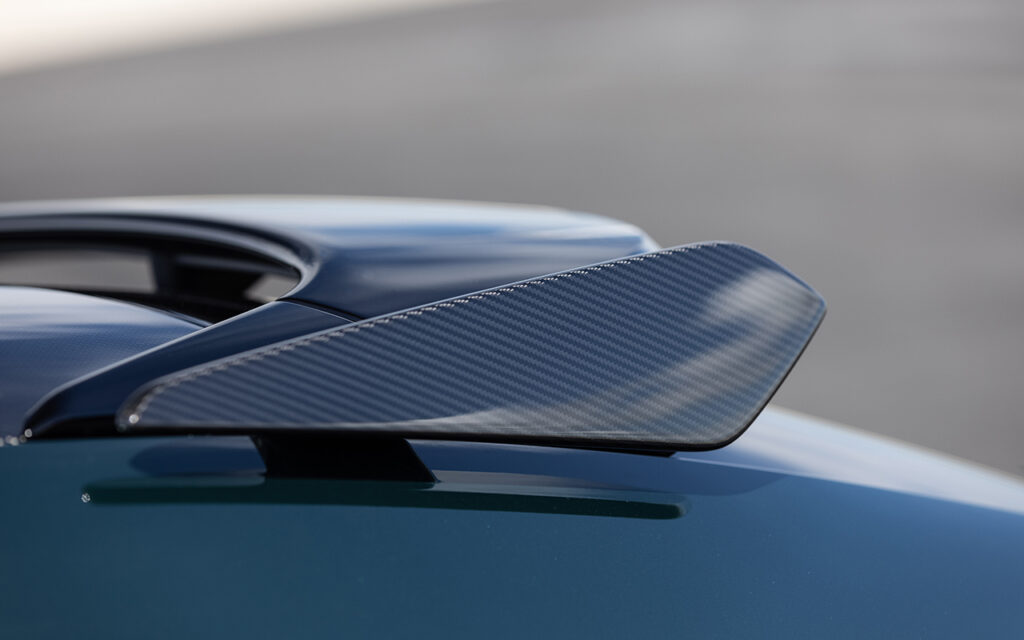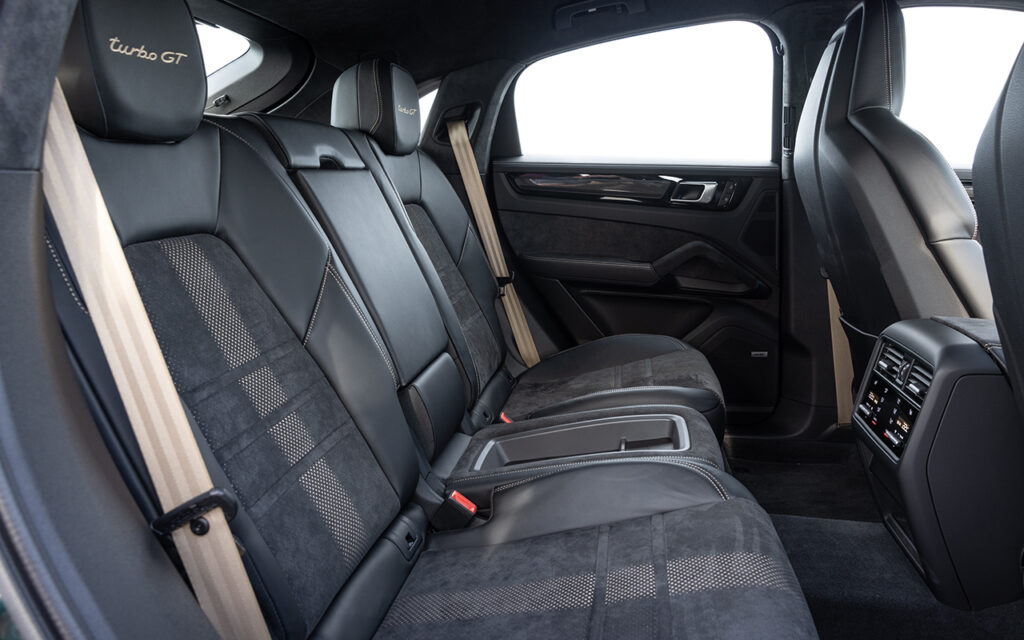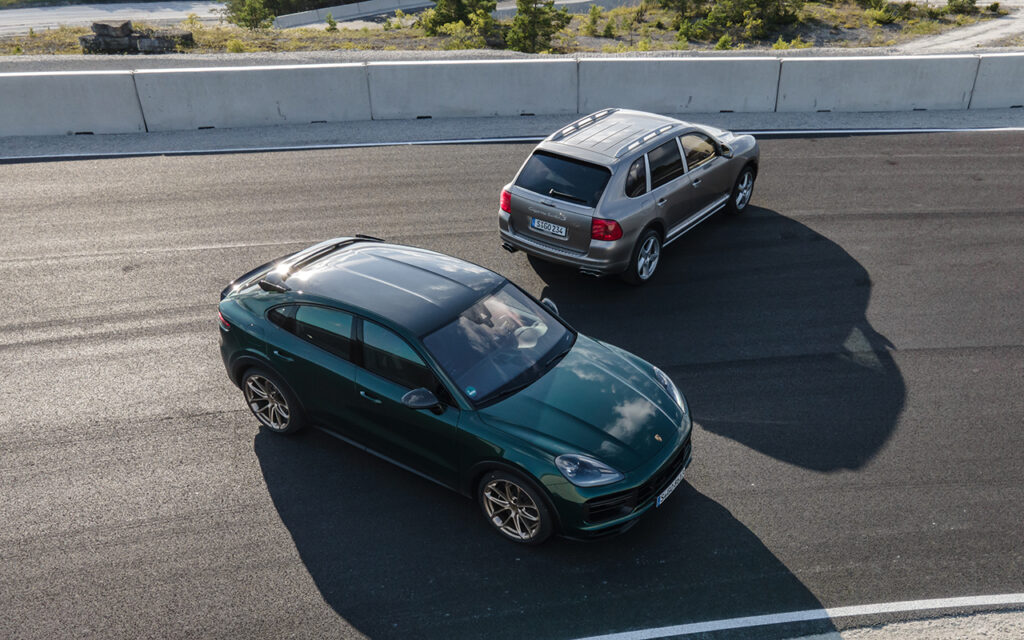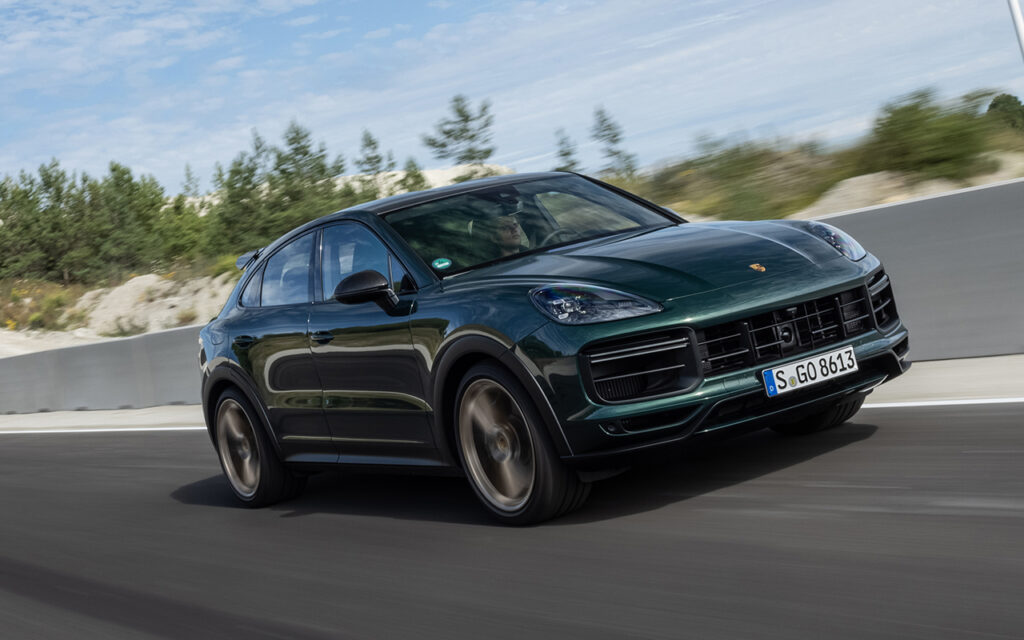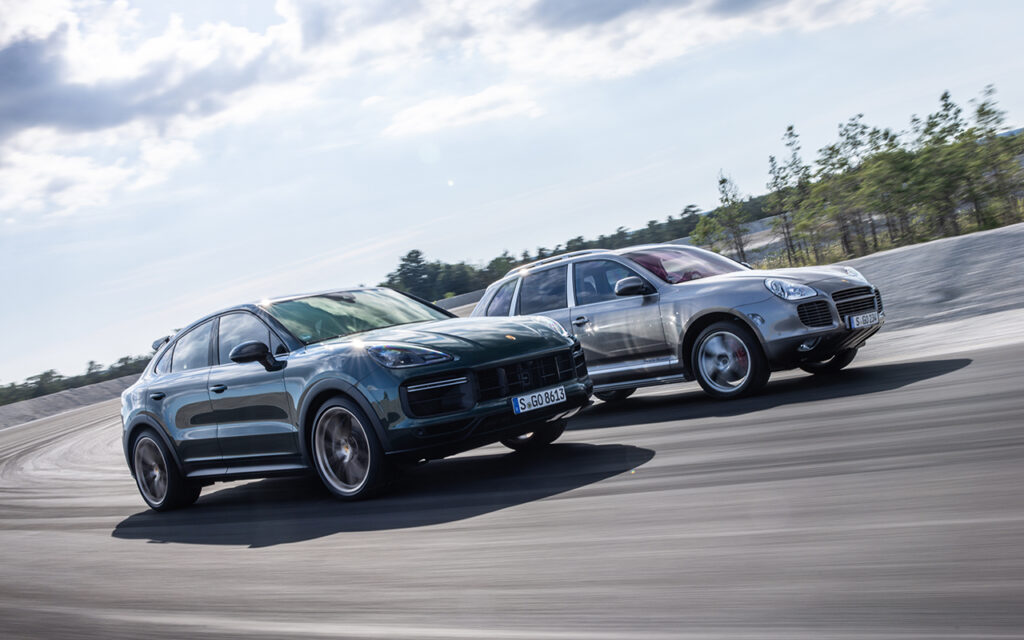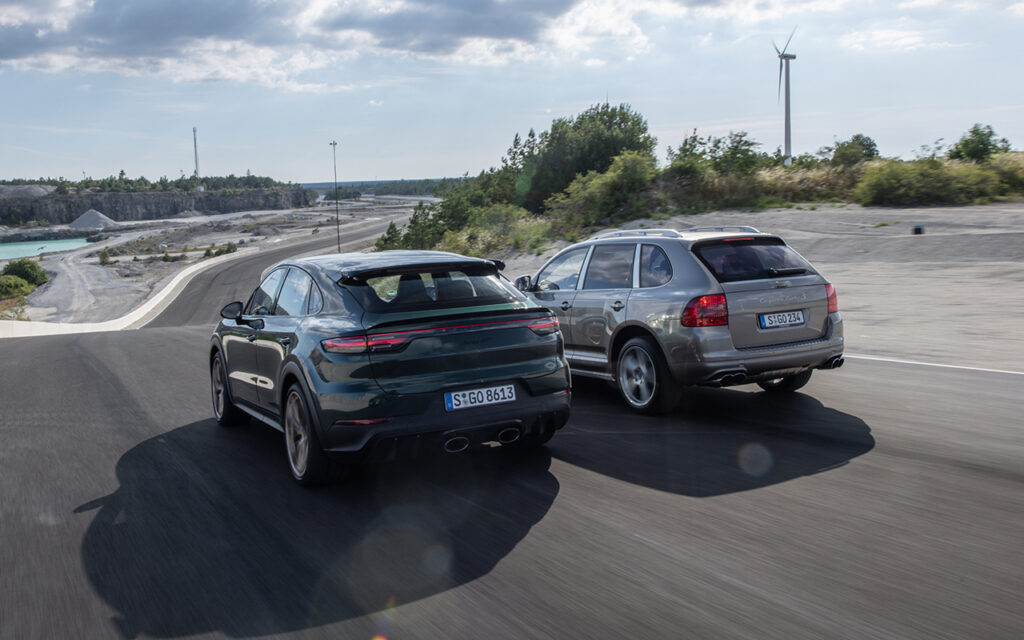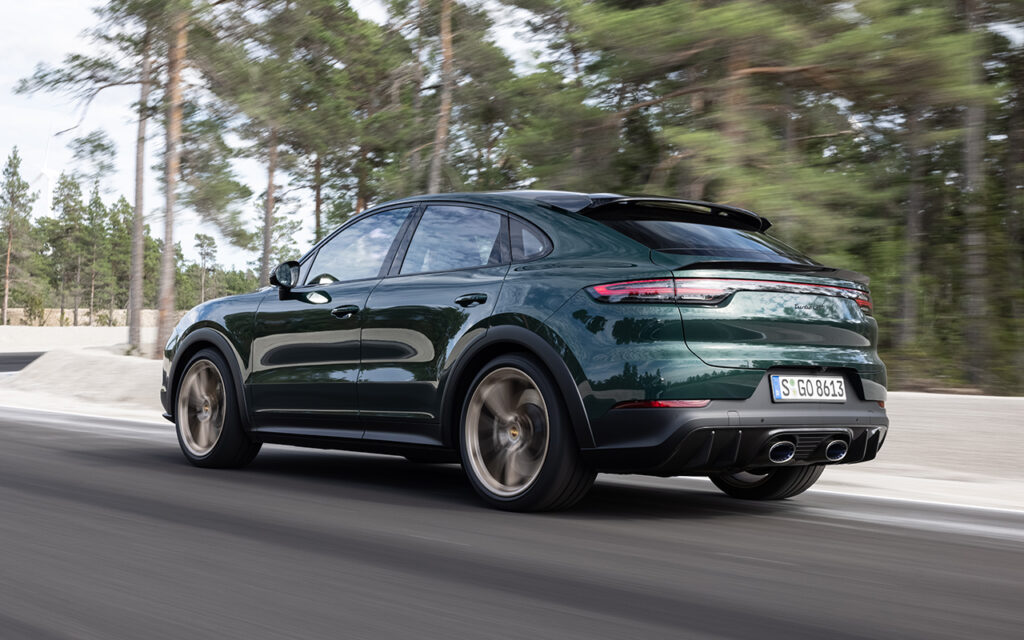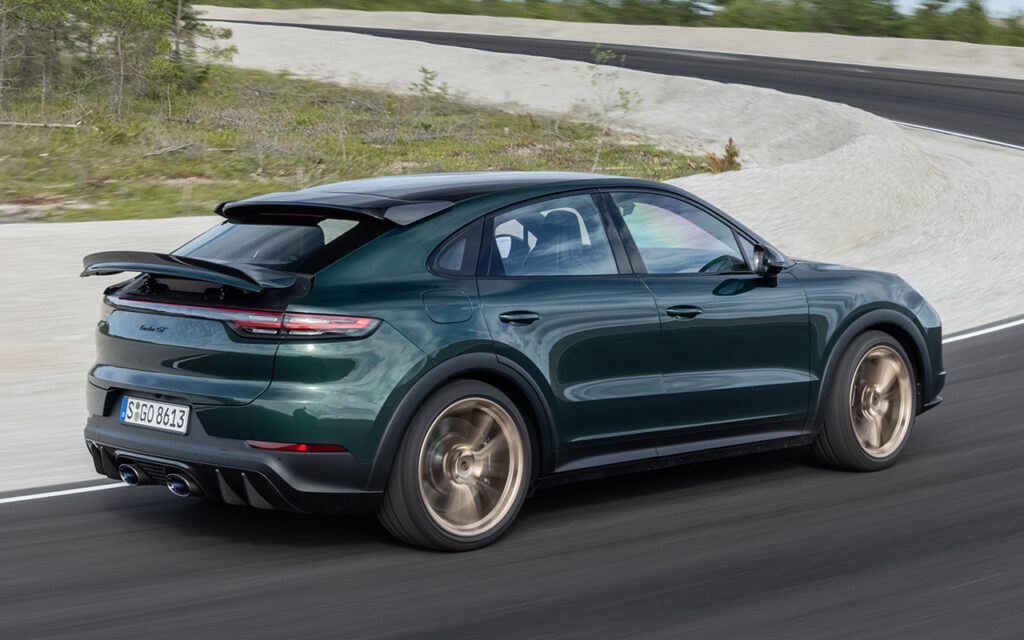After almost twenty years of production, the Cayenne gained the important GT badge. But is this 911-aping V8 load-lugger a worthy recipient? We hit the road to find out
We can only imagine what it must have been like to be a fly on the wall in the Porsche product planning meeting when someone suggested the company apply its legendary GT badge to a Stuttgart-crested SUV. “Nein!” was likely screamed from a far corner, promptly followed by the complainant snatching up their cup of coffee and storming out of the room. We picture this happening repeatedly until the naysayers returned to their seats after spending a few minutes crunching numbers and realising the idea isn’t so crazy after all.
You see, the GT label has been reserved for the purest of Porsche sports cars since 1955. It makes modern models (primarily GT2, GT3 and GT4) so revered. We already have the Cayenne GTS (Gran Turismo Sport), though. Surely, this is the ultimate motorsport-inspired Porsche SUV? Well, no, because unlike GTS models of the last century, a modern GTS-badged Porsche is less powerful than its GT counterpart and, frankly, isn’t as sporty.
Yes, it can all get a bit confusing, and we apologise to anyone reading this who is, perhaps, looking to buy a Porsche for the first time and wondering what on earth we are banging on about. If this is the case, then you probably don’t want to get into a conversation about whether a GT badge should even be on an SUV. Cue heated debate, but the fact is, these days, SUVs account for more than half of all Porsche sales. Speak to any automotive performance engineer, however, and they’ll tell you an SUV can never match sports car dynamics, no matter how hard it tries. Yet here we are, looking at the new Cayenne Turbo GT.
To give it a head start in the performance league, the Turbo GT is based on the sporty profile of the Cayenne Coupe. Then things get serious. The exterior gets a revised front bumper with large air intakes and a more pronounced spoiler lip. Black wheel arches surround unique twenty-two-inch GT Design wheels in a Neodyme (champagne) colour. There’s a carbon-fibre roof, too. The roof spoiler features carbon-fibre end plates, and the same lightweight weave is used for the lip of the adaptive rear spoiler, which extends by an additional 25mm over that of the ‘regular’ Turbo. Carbon-fibre is also used for the rear diffuser surrounding those striking titanium exhaust tips. All these enhancements not only improve aerodynamics and reduce weight, but help to increase downforce, particularly in the case of the extendable rear spoiler, which can add up to forty kilos at top speed — a mighty 186mph, in case you were wondering.
Under the bonnet nestles the four-litre, twin-turbocharged V8 not only used to great effect in Porsche models, but also in other Volkswagen Group products, not least the Cayenne’s big rival, the Lamborghini Urus. In the Cayenne Turbo GT, this eight-cylinder powerhouse produces 631bhp, ninety ponies more than the Cayenne Turbo Coupe. Torque is up 59lb-ft to 627lb-ft and the sprint from rest to 62mph is down a massive six tenths at just 3.3 seconds. The main upgrade areas are in the crankshaft, turbocharger, induction system, intercooler and fuel injection apparatus. Other key engine components, such as the connecting rods, pistons, timing chain drive and torsional vibration dampers, have also been enhanced to cope with the increased torque. Unsurprisingly, the eight-speed Tiptronic S automatic gearbox has been upgraded and there’s a new exhaust system unique to the Cayenne Turbo GT. All pipework is manufactured from titanium, from the middle of the vehicle to the outlets.
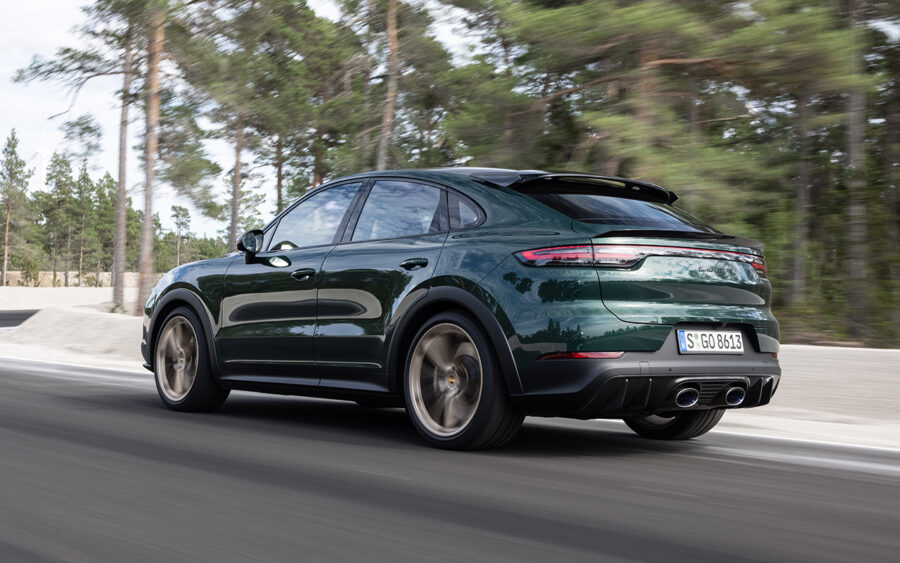
As you’ve probably anticipated, Porsche Ceramic Composite Brakes (PCCB) come as standard. In this case, the calipers are painted yellow. The discs themselves measure 440mm at the front and 410mm at the rear. Don’t be fooled by this track-friendly equipment list, though. The interior is more Cayenne than GT3, which is probably a good thing considering the nature of the vehicle.
There’s no roll cage and the back seats are still in place, making sure this quick cargo carrier fits the bill as a comfortable, spacious SUV for a family of Porsche petrolheads. The sporty theme is emphasised by Alcantara on the headlining and pillars, the edge of the dashboard, top of the centre console storage, by covering the steering wheel and even the grab handles. It might sound like lashings of the stuff have been thrown at the Cayenne cabin, but Porsche hasn’t overdone things and there are nice contrasting elements, including Turbo GT stitched lettering on the headrests, the Neodyme-coloured seat belts and matching stitching for the leather seat bolsters. In a nod to Porsche’s GT cars, the steering wheel wears a yellow strip the twelve o’clock position, too.
There’s no shortage of tech either, including the new Porsche Communication Management (PCM) 6.0 infotainment system. It’s accessible through the touchscreen in the centre console, though we admit we only really used the swish user interface to change chassis settings on our test drive. Even so, you may be pleased to hear PCM now features Apple CarPlay, Android Auto and much more besides. It also makes use of the superb digital screens either side of the rev counter in the instrument cluster, as do a range of driver assistance systems, from park distance control to adaptive cruise, the latter ideal for motorway miles.
Now, before we get to how the Turbo GT actually drives, let’s just get something out of the way: this Cayenne set the fastest lap time for an SUV around the Nürburgring, clocking seven minutes and 38.9 seconds with Porsche test driver, Lars Kern, behind the wheel. Impressive stuff, but fresh from its debut at the recent Goodwood Festival of Speed, we were keen to drive the Turbo GT on high-speed motorways and rural driving roads to see just how sporty this 2.2-tonne SUV is in ever so slightly more real-world environments.
We can tell you it’s very good. Ignore the question of whether it’s as good as a sports car, because it isn’t. Well, it’s not as good as a Porsche sports car, anyway. Let’s just accept the fact and move on. Indeed, let’s focus on how good the Cayenne Turbo GT is as a sporty SUV. Do this and you quickly realise tapping in to that 631bhp and pushing the rev needle up to 6,000rpm is enormous fun. This Porsche will amble along in the Normal driving mode in a docile manner and, on a motorway, is remarkably pleasant, proving not only comfortable, but quiet — perfect for engaging cruise control and relaxing in traffic.
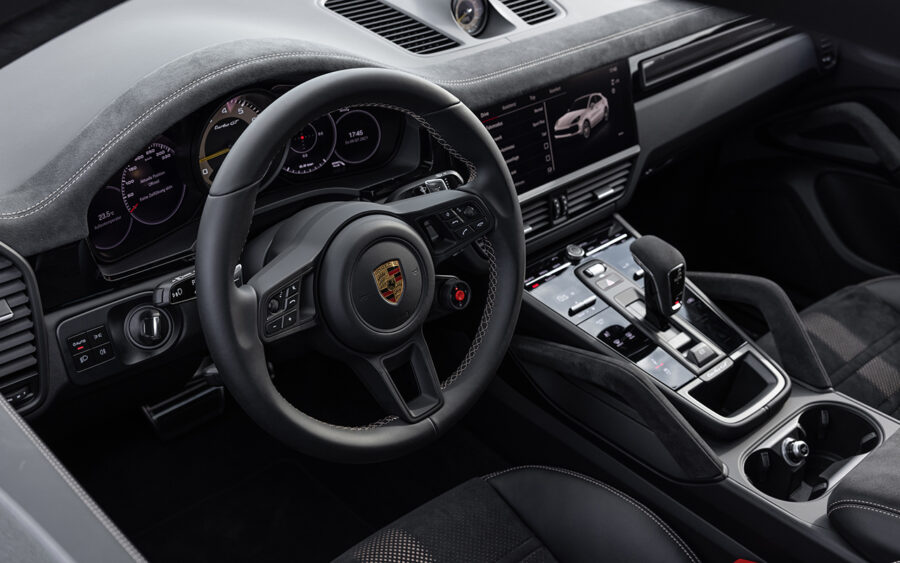
Push to overtake, however, and the titanium exhaust amplifies the sound emanating from the twin-turbocharged V8, filling the air with an immense roar. Of course, we played with various settings on the motorway, dialling in Sport mode and noting a slight delay in throttle response. Switch to Sport Plus and this is eliminated entirely, the throttle responding with the slightest of inputs, while the sound level increases to a height many won’t expect from a big SUV. A word of caution on this front: we left the suspension in Sport Plus and it was like driving over ripples in water, enough to induce a mild case of seasickness. Our advice? For motorway driving, stick to Normal mode.
It was time to hit the back roads. There’s rear bias to the Turbo GT’s chassis, which means the 627lb-ft can make the back end a little twitchy if you start playing around in the peak torque zone, between 2,300rpm and 4,500rpm. That said, this Cayenne remains perfectly balanced, the whole Porsche remaining in sync with its driver, just like a traditional Stuttgart sports car, albeit one sitting higher off the ground (interestingly, the GT rides seventeen millimetres lower than the Cayenne Turbo). We’re told some of the vehicle’s remarkable balance has resulted from engineers altering the air suspension to make the chassis fifteen percent more rigid, while the Porsche Active Suspension Management (PASM) and Porsche Dynamic Chassis Control (PCCC) systems have also been tweaked.
Additionally, the rear-wheel steering system has been adjusted. Here lies one of the most important aspects of the Turbo GT: the way it flicks through corners. The steering communicates precisely in the same way it would in a GT car, telegraphing to the driver everything happening on the road. In other words, this is an incredibly intuitive Porsche to drive quickly, reacting to your every input, delivering on your every request as though proving the point, it’s more at home being pushed hard on a rewarding back road than travelling through urban sprawl.
The driving position is almost perfect, but for one thing: paddle shifters are all well and good, but, to be perfectly honest, most of us prefer to feel in control, old-school — down-changing with a stick shift as you lunge into a corner can be immensely satisfying. Here, we’re in charge of an eight-speed semi-automatic Tiptronic gearbox, rather than a purely manual transmission. Sadly, even when working the Tiptronic system in manual mode, the gear stick isn’t in the ideal place to create the feeling the Turbo GT pivots around a central point. It’s something Porsche is usually very good at, but this time, the stick felt a bit of a reach.
We don’t expect buyers to be put off by this. We’re also sure they won’t be offended by the model’s fuel consumption — the official combined figure is 22.4mpg, but after around seventy miles of spirited driving, our test vehicle’s trip computer was registering 15.3mpg. If you buy a Cayenne Turbo GT to do what its creators intended it to do, then we suspect you’ll also be seeing a similarly low figure. This all brings us to the point where we have to make a decision. Is the Cayenne Turbo GT a real GT?
Porsche Cayenne Turbo GT: our verdict
For us the answer is… no. Certainly not by proper definition in the traditional sense, anyway. If times have changed, however, and considering SUVs are now seen by many as a car, then perhaps we need to change our way of thinking? After all, the whole point of a GT is to be able to tour longer distances in comfort, while still allowing the driver enjoy a dynamic and sporty drive when the mood takes them.
What we’ve therefore decided to do (in a somewhat undemocratic way) is make things easier and keep everyone happy by creating a whole new vehicle category: GT SUV (or maybe SUV GT?!). Now this is settled, when it comes to Porsche’s rival manufacturers entering the GT SUV sector, the Cayenne Turbo GT is the benchmark by which the rest of the category will have to be judged.

